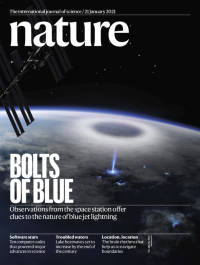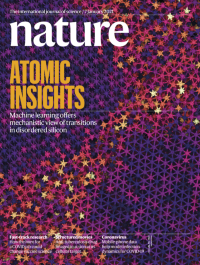Volume 589
-
No. 7843 28 January 2021
Exposing biasAcross many economies in the world, women and individuals from minority ethnic groups regularly experience unfavourable outcomes when seeking employment. But the part played by discrimination in these results has been unclear. In this week’s issue, Dominik Hangartner, Daniel Kopp and Michael Siegenthaler present an approach for quantifying hiring discrimination by tracking the search behaviour of recruiters on employment websites and using machine learning to control for the jobseeker characteristics that the recruiters see. Testing their technique on a platform for jobseekers in Switzerland, the researchers found that individuals from immigrant and minority ethnic groups had rates of contact that were 4–19% lower than those for otherwise identical candidates from the majority ethnic group. The team also saw that women had 7% lower contact rates in male-dominated professions, although the opposite pattern was seen for male jobseekers in female-dominated professions. The researchers suggest that their tool could offer a cost-efficient and non-intrusive way to continuously monitor and counter discrimination in recruitment. The cover image is an artistic representation of racial discrimination in recruitment, adapted from Shutterstock/fizkes.
-
No. 7842 21 January 2021
Bolts of blueThe cover shows an artist’s impression of a blue jet seen from the International Space Station. Blue jets are a form of lightning that travel from the tops of thunder clouds upwards into the stratosphere. Lasting less than a second, these jets are not well characterized and there is some debate over how they are generated. In this week’s issue, Torsten Neubert and his colleagues report observations of blue jets collected by an instrument aboard the International Space Station. With an unimpeded view of such events, the researchers observed a blue jet that initiated with a bright blue flash in the cloud top of around 10 microseconds in duration. The team was able to determine that the flash is probably the optical equivalent of the negative narrow bipolar pulses in radio waves that can initiate lighting within clouds.
-
No. 7841 14 January 2021
Photon avalanchePhoton avalanching is a nonlinear optical effect in which a material emits a disproportionately large number—an ‘avalanche’—of photons when illuminated above a threshold intensity. Until now, this phenomenon has been observed only in bulk materials and aggregates. In this week’s issue, James Schuck and his colleagues show that nanocrystals doped with thulium ions can individually give rise to photon avalanches. The researchers used their nanocrystals in single-beam, super-resolution imaging, achieving a spatial resolution below 70 nanometres. They note that their avalanching nanoparticles could find application in sub-wavelength imaging, optical and environmental sensing, and neuromorphic computing.
-
No. 7840 7 January 2021
Atomic insightsThe rich phase behavior exhibited by amorphous silicon under high pressures has been studied extensively with a view to obtaining a deeper understanding of structurally disordered materials in general. Yet a detailed mechanistic understanding of these behaviours has remained elusive. In this week’s issue, Volker Deringer and his colleagues show how atomistic machine-learning models, used to simulate pressurized amorphous silicon, can shed light on these behaviours, capturing the full range of structural transitions encountered experimentally. Such computational approaches should open up fresh prospects for predictive materials modelling that encompasses challenging experimental conditions.




